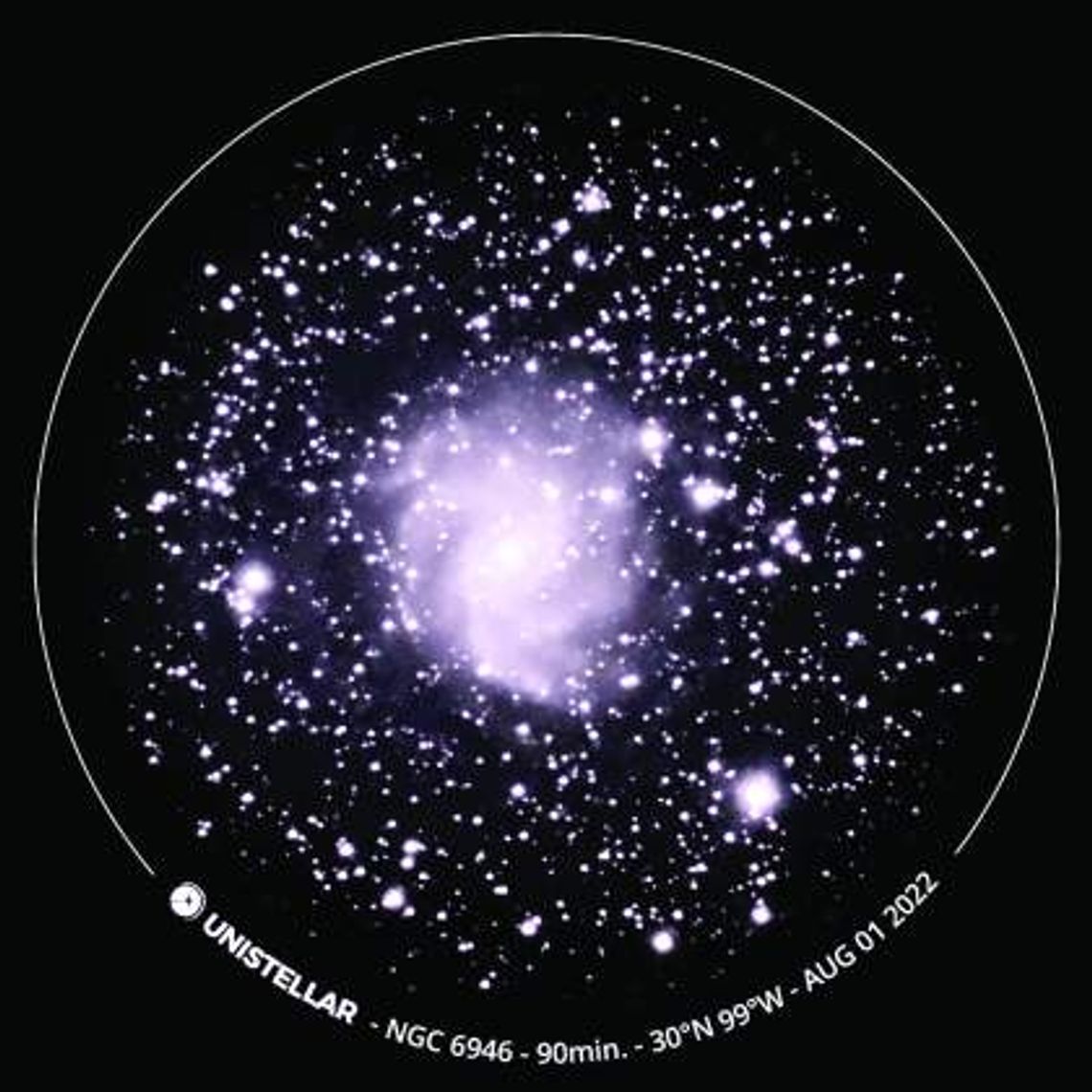“These trees and bushes and grasses around me are living organisms just like animals. And they have to face very much the same sort of problems as animals face throughout their lives if they're to survive. They have to fight one another, they have to compete for mates, they have to invade new territories. But the reason that we're seldom aware of these dramas is that plants of course live on a different timescale.” – Sir David Attenborough, naturalist
Those words, different timescales. That very much describes everything you see at night in the sky.
We here on earth live our lives at an incredibly faster rate than planets, stars and galaxies evolve. It’s like the heavens are stuck on flypaper, never changing, but that’s not true.
We just can’t see the changes because we live our lives and die so quickly. But those planets, stars and galaxies, though not living by our definition, evolve toward their kind of death on vast timescales.
The accompanying image of the galaxy NGC 6946, which lies on the boundary of Cygnus and Cepheus, is popularly called the Fireworks Galaxy. That is because there have been 10 observed supernovae in this galaxy in the last 50 years, more than any other.
Supernovae occur at the death of a certain size and type of star. In comparison, our galaxy, the Milky Way, experiences just one or two supernovae events per century.
The Fireworks Galaxy is 25.2 million light years distant from us. It’s about 20 percent the size of the Milky Way. This was a 90-minute image run from 08/1/2022.
Considering the galaxy’s distance from us, those supernovae actually occurred over 25 million years ago, but we’re just now seeing them because light travels at a set speed. It’s not instantaneous, though it appears that way to us in our daily lives.
Nova or Novae is Latin for “new,” as in new stars. Written documents refer to relics of at least a dozen supernovae in our galaxy within the past several thousand years. There are remains of supernovae all around the night sky, but mostly only visible via photography.
You see their exploded shells spreading out in the darkness. Hundreds of supernovae have been observed in other galaxies, many of them momentarily as bright as their host galaxies before fading away. The closest of these was probably the mother of the Veil Nebular in Cygnus. Its remains lie a mere 1,500 light years from earth.
Professional astronomers have measured its expansion velocity to infer it’s progenitor star must have detonated around 18,000 B.C. It likely exceeded the brightness of the full moon. Only Stone Age humans were around to see it. Imagine the effect it would have had on their myths, religions, and cultures.
The nearest star, our sun, is a G class yellow dwarf and is about halfway through it’s 9-billion-year potential lifespan. Well, you say, whatever descendants of life on earth will have a comfortably long time to live here.
No grasshopper, that’s not quite the entire story. We have about 1 billion years to stick around this rock before it becomes quite uninhabitable. Our sun will have fused most of it’s hydrogen into helium by then and will start expanding.
Most of the inner planets, Mercury, Venus, Earth and perhaps Mars, will wind up inside its expanding envelope. Our sun is too small to become a Novae or Supernovae. Rather, it will shed its outer layers like an onion leaving a very hot, small White Dwarf star.
All this begs the question, Will there be any life left on earth in a century or two if we don’t rather quickly solve climate change, aka global warming? Will there be any humans left to try and solve future problems?
“The meek shall inherit the earth” takes on a new meaning, doesn’t it? The meek may well refer to plants, birds and insects. “They” may survive, but there is no guarantee for us or our descendants.
Well, that’s our science class for the day. Following is what’s up in the September sky.
The full moon will occur on Sept. 10. The Fall equinox will occur on Sept 22, denoting the official beginning of fall in the Northern Hemisphere. That same date will be the beginning of spring in the Southern Hemisphere.
The new moon (dark) will occur on Sept 25, and is a great time to be out under the stars away from city lights. Mighty Jupiter will be at opposition that same night, meaning its closest approach to our planet this year. It will shine brightly at magnitude -2.9. The lower the number, the brighter it appears.
The sun for comparison shines at magnitude -26.74.
The nearly full moon will pass just 1.5 degrees south of Jupiter on Sept 11, a very good binocular opportunity. The moon will be at mag -12.7.
I encourage you to get out under the balmier September skies now that the heat and bugs of summer are passing.







Comment
Comments